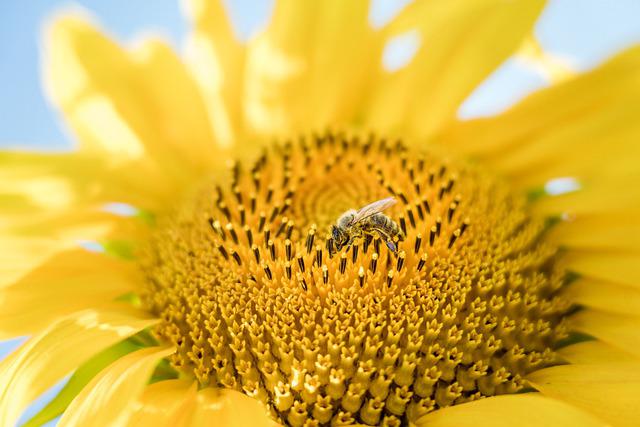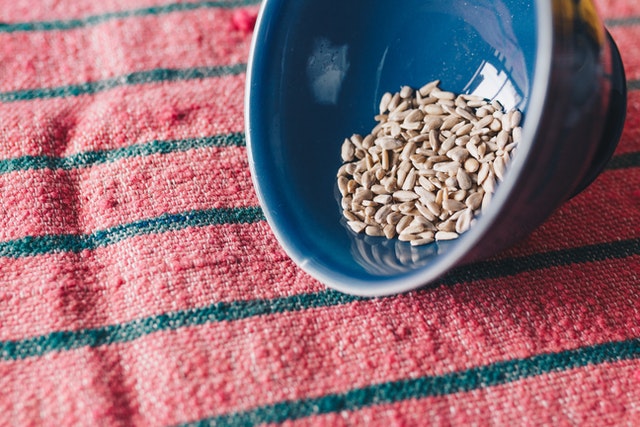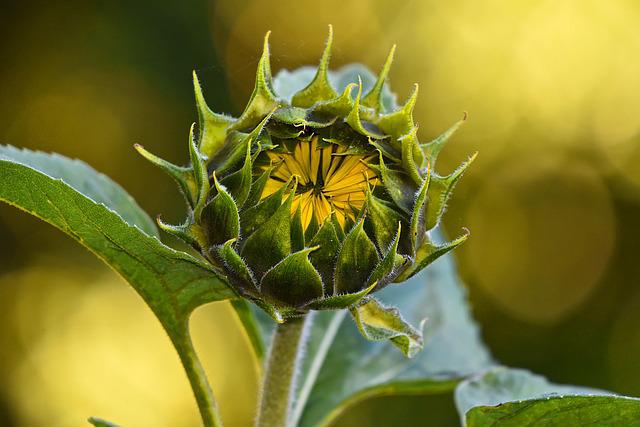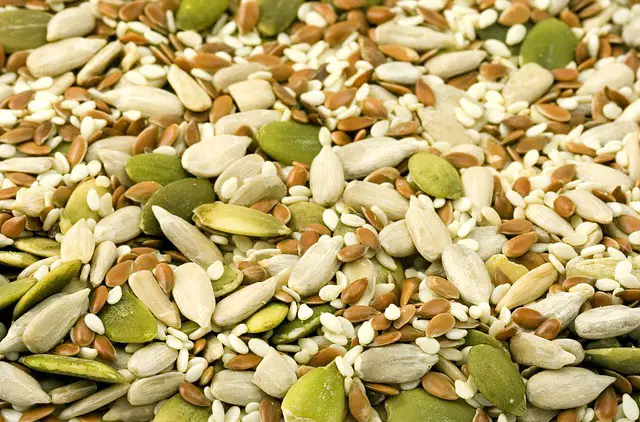You might have had to ask yourself during the sunflower parenting journey, “Why are my sunflower seeds white?” This question often stems from the helpless feeling of inadequacy when your sunflower looks sick. Thankfully, other garden parents have walked this path, leaving behind trails of wisdom and experience.
A prevalent error of sunflower gardeners is that they harvest the sunflower seeds before maturity and process them too early. This makes the sunflower seeds white and moist. And yet, this is not the only source of error in sunflower parenting. In addition to harvesting sunflower seeds too early, other causes of white sunflower seeds include insufficient sunlight, pests, disease, and genetics. It’s time to learn all there is to know.
This article answers the puzzling questions about why your sunflower seeds are white. It also gives you a comprehensive gardening guide that prevents errors and poor sunflower grooming results.
Why Are Sunflower Seeds So Important?

Sunflower seeds have become part of our dishes and snacks, but what is all the fuss about? Beyond their rich flavor, these miracle seeds have several benefits no one told us about. These include:
- Source of economic wealth to the gardener or farmer. This explains their anxious question, “why are my sunflower seeds white?” There are two main species of sunflower plants. Farmers grow one of these for the oil and the other for food
- Sunflower seeds are a healthy source of fat, vitamins, and carbs. So, it is an all-time favorite component of weight loss diets.
- Beauty products, hair oils, soaps and food supplements include essential oils from sunflower seeds as ingredients
- They contain selenium and vitamin E, which are antioxidants. These boost immunity and keep you from diseases
- They contain essential compounds such as flavonoids, magnesium, and calcium. These anti-inflammatory properties keep you from chronic conditions such as angina, stroke, and obesity.
So, when you ask, “why are my sunflower seeds white?” you are not overreacting.
Why Are My Sunflower Seeds White? Causes and Tips
After painstakingly grooming your sunflowers to maturity, it is sad to see them go bad. To prevent this, we will see some errors in harvesting and processing the sunflower seeds. This will help guide you to preserve your hard work.
1. Immature Seeds

Sometimes, we get so excited and anxious to see the sunflower seeds that we cut the flower heads too early. At other times, this is an honest mistake. Yet, sunflower seeds are still tender and immature when this happens. So, we will have white sunflower seeds, which may rot during processing.
Also, if you want to plant said white sunflower seeds the following season, they will not do well or even be viable. So, it will increase your production cost. This is because you will have to get new sunflower seeds from vendors or plant shops.
Another downside to harvesting the seeds too early is their bad taste and poor smell. This will put everyone off their meal and may cause bowel disturbances.
An Out
Do not worry. There is a trick to knowing when to harvest the flower heads! Watch for wilting sunflower petals. The sunflower seeds only attain maturity after the petals fall off. Another helpful trick is to wait until the seeds turn black and white. This is a sign that they are ready for harvest.
Fun Fact : Birds are annoying pests of sunflower seeds. Yet, they are goods sentinels of harvest. They do not feed on immature seeds. So, when you see birds feeding on the sunflower seeds, it indicates that the seeds are ready for harvest.
2. Processing Errors
The processing of sunflower seeds after harvesting is an art. And like all artworks, it requires detail and precision. So, a sunflower parent may run into trouble making some of these errors:
Drying for Short Periods

Immediately after harvesting, you must sun-dry the seeds to dispel their moisture content. This keeps the seeds viable for extended periods and eases the processing of seeds. Another error involves drying seeds in closed spaces. The seeds may turn brown but are likely to retain some moisture. This eventually affects the texture of seeds, as they will feel meaty and mushy.
Roasting Seeds in Extreme Temperatures
The ideal temperature for roasting sunflower seeds is between 280-3200F for thirty to forty minutes. When the temperature is exceptionally high, it burns the seeds, making them appear white. This ruins the sunflower seeds, making them useless in foods and snacks.
Shelling Before Roasting
This is another method of processing sunflower seeds and yields a great result. But, if you shell the seeds before they are fully dry, you may have problems. The moisture content will cause the seeds to be white and bready after roasting.
An Out
Processing errors happen often and can render all your efforts futile. So, to prevent this occurrence, here are a few helpful tips:
- Dry the sunflower seeds in spaces with sufficient airflow. The wind carries the water droplets within the seeds and causes the sunflower seeds to dry faster.
- Dry for 3-4 days before shelling the seeds. This will ensure that the seeds are rid of moisture
- When drying, do not stack seeds on each other. This prevents the seeds from drying sufficiently. To dry the seeds, you must have ample space.
- Roast or boil at the ideal temperature of 280-3200F
- Mix the seeds as they roast to ensure that they roast evenly
Grooming Tips
Sunflower grooming is essential to ensure healthy and vibrant seeds. By following proper techniques, you can prevent the occurrence of white sunflower seeds and maximize the success of your sunflower gardening.
There are over 70 species of sunflower, and they have their unique characteristics. Yet, it takes them about 80-95 days to attain maturity. Several factors may shorten or lengthen the growth period. These include:
- Environmental conditions such as excessive rainfall, insufficient sunlight, and arid conditions
- Pests: Birds are fearsome pests to these beauties and feed on flower petals and seeds. Without the flower petals, the seeds may not become mature enough for harvest. In the worst cases, they may die off.
1. Ideal Growth Conditions

To record incredible sunflower growth, you must provide the optimum environments for these plants. To grow well, they require:
- Soil temperature of about 500F; sunflower seeds have a low tolerance for cool and wet environments. Plant roots often rot in such environments.
- Extended periods of sunlight. The seeds often germinate 10 days post planting in the right conditions.
- Loamy soil: They need rich soil to grow well. They will not do well in compact soil, as the oxygen tension will not support the sunflower growth.
- Protection from birds: You can cover the flower heads with paper bags. This protects them from pests such as birds and squirrels.
2. Adequate Watering and Sunlight
To promote the growth of mature and healthy sunflower seeds, it is crucial to provide them with optimal conditions. Sunflowers thrive in full sunlight, so make sure to plant them in an area that receives at least 6 to 8 hours of direct sunlight per day.
Additionally, provide consistent and deep watering to keep the soil moist but not waterlogged. Proper hydration and sunlight will contribute to the development of fully mature seeds with rich colors.
3. Pest Control Measures
Pests, such as birds and squirrels, can cause damage to sunflower seeds, both during their growth and after harvesting. Protect your sunflower heads from these pesky creatures by covering them with paper bags or mesh netting. This will prevent the pests from accessing the seeds and ensure that they reach maturity without interference.
4. Harvesting at the Right Time
One common mistake that leads to white sunflower seeds is harvesting too early. It’s important to wait until the sunflower petals have wilted and fallen off, indicating that the seeds are fully mature.
Additionally, observe the color of the seeds; black and white seeds indicate readiness for harvest. By harvesting at the right time, you can avoid the problem of white, underdeveloped seeds.
5. Proper Seed Drying and Storage
After harvesting the sunflower heads, it’s essential to dry the seeds properly before storage. Spread them out in a single layer on a clean and dry surface, allowing them to air dry for about 3 to 4 days.
This will ensure that any remaining moisture is eliminated, reducing the chances of white, moldy seeds. Once dried, store the seeds in a cool and dry place in airtight containers to maintain their quality.
Proper grooming techniques will not only result in healthy sunflower seeds but also enhance your overall gardening experience. By providing the right conditions, protecting against pests, harvesting at the appropriate time, and ensuring proper seed drying and storage, you can enjoy a bountiful harvest of vibrant and flavorful sunflower seeds.
Also see: Pothos Sunburn
Summary
Having white sunflower seeds indicates a wrong step in harvesting and processing the seeds. You might be unable to salvage these seeds, and this will cause all your efforts to go down the drain. So, learning the proper steps before harvesting preserves the seeds and gives you satisfying results.
This article has answered the question, “why are my sunflower seeds white?” The gardener gets the expected results by practicing the proper grooming techniques and harvesting and processing sunflower seeds.
You can also learn about the grooming requirements for other plants. This helps you to avoid common errors and have fun while gardening.
Frequently Asked Questions
Gardeners also wanted to know:
Why are my sunflower seeds not correctly colored?
There are several varieties of sunflower plants, and so the color of seed shells also differs. The shells contain the seeds and can be white with black stripes or entirely black. On shelling, the seeds are off-white when dry. So, when the seeds are stark white, there was likely an error during harvesting or processing.
Can you grow white sunflowers from seeds?
In the right conditions, you can grow sunflowers from seeds. But, if the seeds are white, they may be dead, so they will not grow into sunflowers.
What eats white striped sunflower seeds?
Squirrels and birds are significant pests of sunflowers. They love the mature seeds but also destroy developing plants. So, you must keep them away from the plant at all stages of development.
What happens if you shell sunflower seeds before cooking?
It is ideal for shelling the seeds before roasting them. Yet, you will run into trouble if they are not completely dry before shelling. So, it is best to dry them for about 3-4 days and shell them.

Hey, I’m Lisa and I’ve been an avid gardener for over 30 years. I love writing, talking and living in the garden! Feel free to connect with me on my socials below

